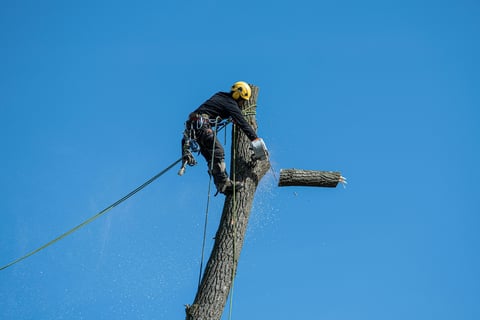10 Firewood Safety Tips Every Wood Burner Should Know
There’s nothing quite like the warmth and ambiance of a wood fire, but it’s not all cozy blankets and crackling logs. Burning firewood comes with risks—creosote buildup, chimney fires, and indoor air pollution, to name a few. Whether you’re a seasoned wood burner or a first-time fireplace user, safety should always be your top priority. In this article, we’ll share 10 essential firewood safety tips to keep your home, family, and environment safe. From proper storage to chimney maintenance, these expert-backed guidelines will help you enjoy your fire worry-free.
SAFETY
2/9/20253 min read


1. Use Only Seasoned Firewood
Why It Matters: Burning green or unseasoned wood creates excessive smoke, leading to creosote buildup in your chimney—a major fire hazard.
Safety Tip: Season firewood for 6–12 months and use a moisture meter to ensure it’s below 20% moisture before burning.
---
2. Store Firewood Safely
Why It Matters: Improperly stored wood can attract pests, rot, or become a tripping hazard.
Safety Tip:
- Stack wood at least 20 feet from your home to deter pests.
- Use a firewood rack to keep logs off the ground and promote airflow.
- Cover the top of the stack with a tarp, but leave the sides open to prevent moisture buildup.
---
3. Keep Your Chimney Clean
Why It Matters: Creosote, a byproduct of burning wood, can accumulate in your chimney and ignite, causing a dangerous chimney fire.
Safety Tip:
- Have your chimney inspected and cleaned annually by a certified professional.
- Use a chimney brush to remove soot between professional cleanings.
- Burn creosote logs for maintenance of buildup
---
4. Install Smoke and Carbon Monoxide Detectors
Why It Matters: Smoke and carbon monoxide (CO) are silent threats that can quickly become deadly.
Safety Tip:
- Install detectors on every level of your home, especially near sleeping areas.
- Test detectors monthly and replace batteries twice a year.
---
5. Use a Fire Screen or Glass Door
Why It Matters: Sparks and embers can escape from an open fireplace, igniting nearby flammable materials.
Safety Tip:
- Always use a fire screen or close the glass door when burning wood.
- Keep flammable items (rugs, furniture, curtains) at least 3 feet away from the fireplace.
6. Never Burn Treated or Painted Wood
Why It Matters: Treated or painted wood releases toxic chemicals like arsenic and lead when burned.
Safety Tip:
- Burn only natural, untreated firewood.
- Avoid burning trash, cardboard, or particleboard, which can also release harmful fumes.
---
7. Build Small, Hot Fires
Why It Matters: Large, smoldering fires produce more smoke and creosote, increasing the risk of chimney fires.
Safety Tip:
- Use smaller logs and kindling to build hot, efficient fires.
- Avoid overloading the fireplace or stove with too much wood.
---
8. Keep a Fire Extinguisher Nearby
Why It Matters: Accidents can happen, and a fire extinguisher is your first line of defense.
Safety Tip:
- Place a fire extinguisher within easy reach of your fireplace or wood stove.
- Learn how to use it properly—remember the PASS technique: Pull, Aim, Squeeze, Sweep.
---
9. Monitor Indoor Air Quality
Why It Matters: Burning wood releases particulate matter (PM2.5) and other pollutants that can harm respiratory health.
Safety Tip:
- Use an EPA-certified wood stove or fireplace insert for cleaner burns.
- Ensure proper ventilation by opening a window slightly when using a fireplace.
- Consider using an air purifier to reduce indoor pollutants.
---
10. Extinguish Fires Completely
Why It Matters: Embers can reignite hours after a fire seems out, posing a fire risk.
Safety Tip:
- Let the fire burn down to ash before extinguishing it.
- Spread out the embers and sprinkle water or baking soda to ensure they’re fully out.
- Never use flammable liquids to start or extinguish a fire.
---
Bonus Tip: Educate Your Family
Fire safety is a team effort. Teach everyone in your household, including children, about firewood safety practices. Make sure they know:
- How to safely start and extinguish a fire.
- What to do in case of a fire emergency (e.g., stop, drop, and roll).
- The importance of keeping a safe distance from the fireplace or stove.
---
Conclusion
Burning firewood can be a safe and enjoyable experience when you follow these essential safety tips. By using seasoned wood, maintaining your chimney, and practicing good fire management, you can reduce risks and create a cozy, worry-free environment. Remember, safety isn’t just a one-time effort—it’s an ongoing commitment that ensures your home stays warm and secure.
So, the next time you light a fire, take a moment to review these tips and enjoy the peace of mind that comes with knowing you’re burning safely.
This post may contain affiliate links. If you make a purchase through these links, I may earn a small commission at no extra cost to you. Thank you for supporting FirewoodFanatic.com!


